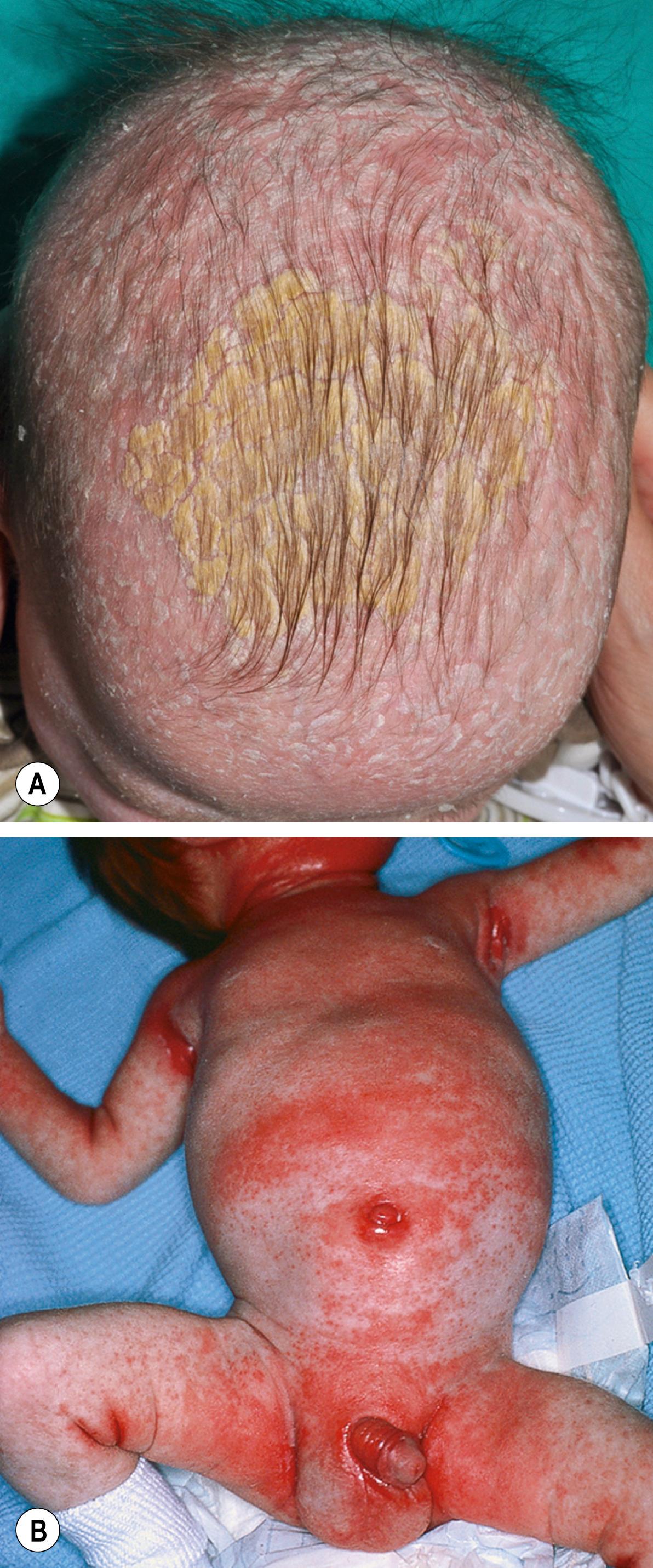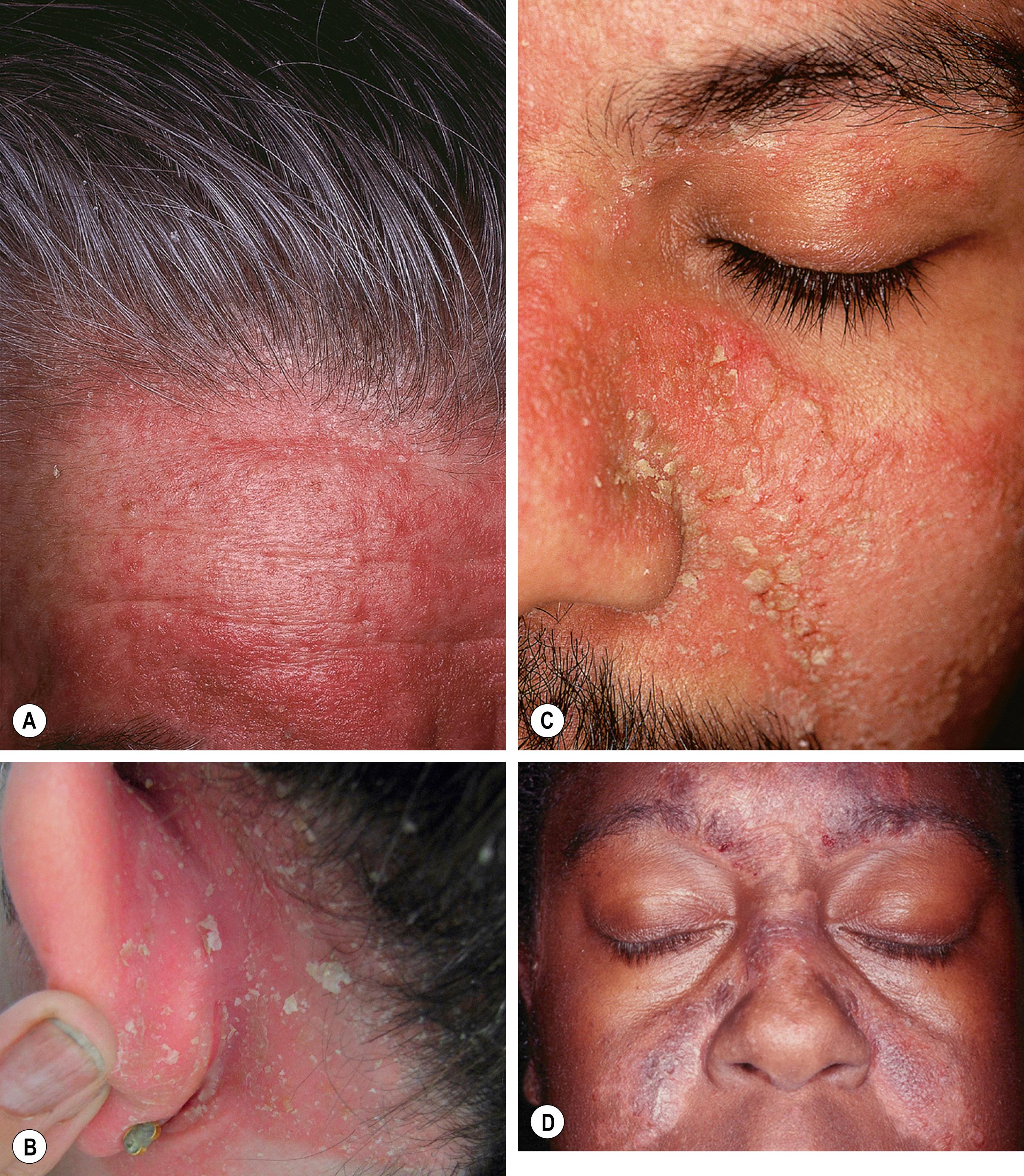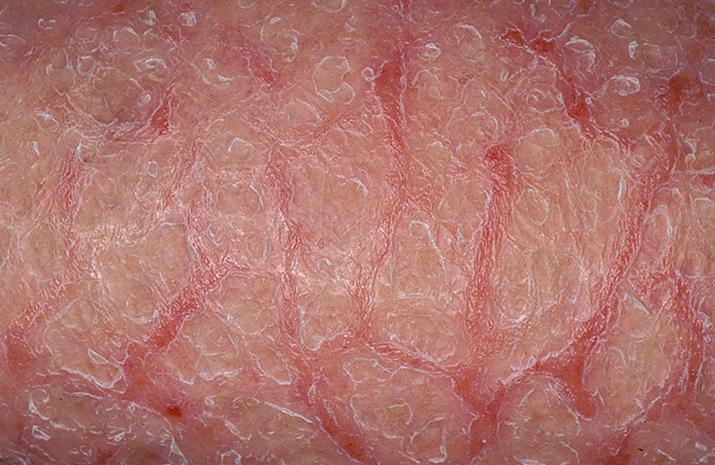Physical Address
304 North Cardinal St.
Dorchester Center, MA 02124
The major forms of dermatitis include atopic (see Ch. 10 ), contact (see Ch. 12 ), seborrheic, asteatotic (xerotic), stasis, and nummular. Dermatitis of special sites – i.e. hands, feet, lips, eyelids, diaper area, and major body folds – is reviewed in Chapter 13 , and pityriasis alba is reviewed in Chapter 10, Chapter 54 .
Common disorder with both an infantile and an adult form ( Figs 11.1 and 11.2 ); unusual in children.


Possibly related to components of sebum and Malassezia spp.
Severe or recalcitrant seborrheic dermatitis can be a sign of underlying HIV infection or neurologic disorder.
In adults, tends to be a chronic relapsing disorder; stress or tapering of systemic CS can lead to a flare.
Symmetric distribution pattern that includes regions with greater sebum production – scalp, ears (external canal, retroauricular fold), medial eyebrows, upper eyelids, nasolabial folds, central chest – and major body folds.
Lesions are pink-yellow to red-brown in color, depending on the underlying skin phototype, and they often have greasy scale, especially in the head and neck region; occasionally annular in configuration.
On the scalp, involvement tends to be more diffuse, compared to the well-circumscribed plaques with thicker silvery scale that are more characteristic of scalp psoriasis.
In some patients, the lesions of the scalp, ears, and major body folds have features of both seborrheic dermatitis and psoriasis, leading to the term “sebopsoriasis”.
DDx: psoriasis, contact dermatitis, other causes of diaper dermatitis (see Fig. 13.4 ), intertrigo (see Fig. 13.2 ) or blepharitis (see Fig. 13.6 ), tinea (pityriasis) versicolor (when presternal), tinea capitis (especially in children), atopic dermatitis, pityriasis amiantacea, and dermatomyositis (scalp); may coexist with rosacea.
Rx: topical antifungal creams and daily shampooing (e.g. ketoconazole, ciclopirox, selenium sulfide or zinc-containing shampoo alternating with a gentle shampoo), mild topical CS on the face and in body folds and moderate-strength topical CS for the scalp and ears; topical calcineurin inhibitors (e.g. tacrolimus ointment).
Arises in areas of dry skin, especially during winter months, in dry climates, and in older adults.
The areas of dermatitis resemble a “dried riverbed” or “crazy-paving” with superficial cracking of the skin ( Fig. 11.3 ).

May be associated with pruritus; stinging can occur with application of water-based topical agents, including those that contain lactic or glycolic acid.
Favors the shins, thighs, lower flanks, and posterior axillary line; may become more widespread but with sparing of the face, palms, and soles.
Involvement of the posterior axillary line seen in chronic GVHD; when widespread, consider the possibility of an underlying systemic lymphoma.
DDx: stasis dermatitis ± autosensitization, ichthyosis vulgaris, adult atopic dermatitis, allergic or irritant contact dermatitis.
Rx: decrease frequency of bathing and use of soaps, liberal use of water-in-oil emollients, mild topical CS ointments.
Become a Clinical Tree membership for Full access and enjoy Unlimited articles
If you are a member. Log in here